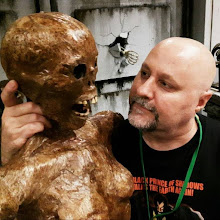Thirteen years ago, in 1812, Captain Aleksei Ivanovich Danilov fought alongside a group of twelve highly-skilled Wallachians who called themselves the 'Oprichniki,' savage mercenaries who helped halt the advancement of French troops into Russia. But Danilov soon discovered that the group were actually 'voordalak' (vampires) and, believing them to be a greater threat to Russia and mankind itself, he systematically hunted and destroyed each and everyone one of them.
To his surprise, the leader of the group--Iuda--actually turned out to be human, although he was equally as vicious as his undead companions. Thirteen years later, in 1825, the war is over and Danilov continues working as a spy, trying to protect his beloved tsar Alexandr I from an uprising he's facing from within his own army, as well as a secretive group of influential Russians who want to see their leader dead.
But it's not long before Danilov learns of a curse upon the royal family; a promise broken one hundred years earlier has lead to the return of an ancient voordalak, who intends on claiming Russia for his own by turning the tsar into one of the undead.
This novel, a sequel to Twelve and the second in a planned series of five, works within a much bigger canvas and therefore is much grander in scale. With many of the original characters killed off in the first book, Kent has come up with several new ones to beef up the story, some of whom take on the narrative as it switches voices between the major players. Although this is a different writing style from its predecessor, it works for the most part, and the only issue I had with it was with Danilov's daughter, who's voice seemed a little too old for her age. Unfortunately with the change in cast and the extended period of time between the stories, much of the first half of this book is spent developing new characters, helping the reader play catch-up from events in Twelve, and putting elements in motion to serve the latter half of the tale. This leads to a slow read in parts, and I found myself putting the novel down for several days in between reads -- it never really felt like a page-turner for me. Added to this is the fact that this novel has much less of a vampire element than the first; it's an historical tale of this period in Russian history, and the bloodsuckers -- although they are the driving force behind the premise of the story -- aren't as prominent within it.
Some of the storytelling issues I had with the first book are found in the sequel as well. The main character, Aleksei Danilov, spends much of his inner narrative over-thinking events and continually questioning actions of those around him. Considering he is a spy, perhaps this is just a character trait that the writer is showcasing, but I found it far too distracting, and for me, it impacted the pacing of the story. Most importantly, I found Danilov and his interaction with his main foe, Cain -- and often his lack of action against the man -- impacted the believability of the story. It should also be noted that at one point, the writer attempts to explain why vampires cannot be seen in mirrors. The answer is both convoluted and unintentionally laughable, so one wonders why this section of the book was even included.
There's no disputing that this is a well-researched book, and certainly gives the reader an extensive lesson in Russian history. For those who enjoy historical novels, "Thirteen Years Later" will certainly entertain, but for those who are looking for a vampire tale, this one doesn't have much bite.
3 out of 5
Purchase Thirteen Years Later







